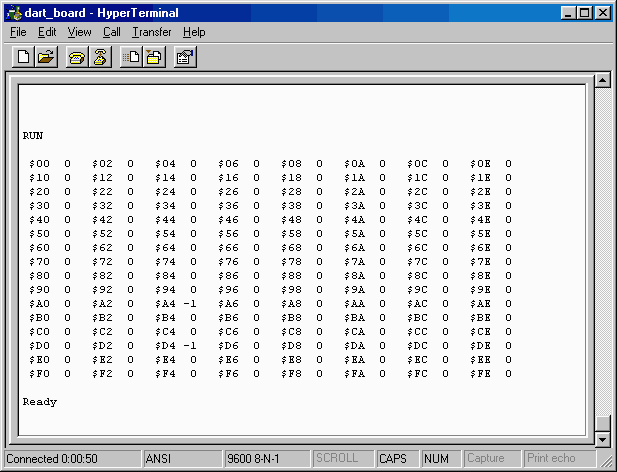![[Return to top]](../../epc.png) 68008 Dartboard control pcb. By Lee
Davison.
68008 Dartboard control pcb. By Lee
Davison.Back
![[Return to top]](../../epc.png) 68008 Dartboard control pcb. By Lee
Davison.
68008 Dartboard control pcb. By Lee
Davison.
Back
When you start EhBASIC to run this program you should answer $47000 to the Memory size? prompt to protect the code from being over written by EhBASIC or it's variables.Having said that this program doesn't make haevy use of strings so does work fine with the default memory settings.
The DATA statements at the end are the hex word version of the assembly code that drives the port.
When this code is run it gives an output like that shown below, any addresses that respond with an ack bit return -1, any that don't ack return zero. In this case the only active addresses are $A4 and $D4, both part of the RAMTROM FRAM & RTC chip.

Once the code has been loaded into memory and the USR() vector set you can use the routine to continuously test one address with a simple loop thus ..
.. which is how the stable 'scope displays were made for these pages.
![[e-mail]](../../eml_sm.png)